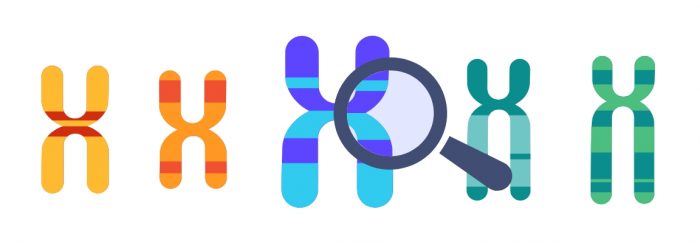We can’t talk about breast cancer without first explaining the cancer. Well, we can, but it would be confusing. Cancer is all those diseases in which abnormal cells lose control of their multiplication and are able to invade other tissues. The ultimate cause is always an alteration of cellular DNA.
Breast cancer is the most common and deadliest cancer in women. In the United States alone, there were 250,000 new cases of breast cancer in 2017 and it is expected that 12% of women in the country will be diagnosed with it in their lifetime.
It is almost exclusively a female pathology, although about 1% of patients are men. Less than 0.2% of cancer-related deaths in men are due to cancer. In 2018, in the United States, there were 2550 new cases in men, causing 480 deaths. From a genetic point of view, there are hardly any differences between breast cancers expressed in both sexes.
However, precisely because of its low incidence in men, when they are diagnosed with breast cancer, it is found in a more advanced stage and with a worse prognosis than in women. In general, the survival rate of men with this cancer is significantly lower than that of women.
Despite the fact that in recent years the incidence has increased notably and it is estimated that 1 in 8 women will suffer from it, breast cancer has one of the best prognoses, with a 5-year survival rate of 90%. This is mainly due to improvements in early detection programmes and the use of effective therapies.
62% of breast cancers are diagnosed when they are still confined to the breast. Another 31% have spread to nearby lymph nodes and only 6% are metastatic. The presence of affected lymph nodes does not necessarily determine the severity of the disease.
The first steps are to determine the size of the tumour, the invasion of nearby nodes and whether metastases are present.

Not all cancers are the same
Although breast cancer is heterogeneous, it is classified into three subgroups, depending on the presence or absence of molecular markers for oestrogen/progesterone receptors (which are hormones), and human epidermal growth factor receptor 2 (ERBB2, let’s make a long name short). It is a simple and inexpensive classification that has been accepted by most experts.
- Positive only for hormone receptors (70% of patients). Usually due to estrogen receptor alpha, a receptor that reacts to hormones and activates an oncogenic growth cascade in cancer cells. It is common in premenopausal women. Survival 5 years after diagnosis is 94%. In men it is also the most common form of the disease.
- Positive only for ERBB2 (15/20% of patients). The responsible gene encodes a transmembrane protein that is overexpressed. The 5-year survival of patients is 99%.
- Negative for both molecular markers (15% of patients). Also called triple negative, these are the ones with the least known pathophysiology. It has the highest probability of recurrence, causing it to have the lowest 5-year survival, at 85%.
And is this classification very important? Very much so. In therapy and prognosis. When the cancer has not metastasised, the subgroup to which it belongs determines the treatment used. If they are hormone-positive, they are usually only treated with endocrine therapy. Those positive for ERBB2 receive chemotherapy with other complementary therapy focused on inhibiting ERBB2. Finally, triple negatives are treated with chemotherapy alone, although sometimes bevacizumab, an antibody against vascular endothelial growth factor (this growth factor is a protein that does everything it does for tumour cells, so it must be monitored) is added to the pack. Surgery is also performed to remove them.
If metastases are present, the situation becomes much more dramatic. The average life expectancy with metastases in the triple negative is 1 year, and 5 years in the other two subgroups. Treatments improve the quality and quantity of the patient’s life, but nowadays a confirmed cure for metastatic breast cancer is considered almost impossible. Hence the importance of early detection.
Behind every diagnosis there is not only a disease situation, but also a moment of economic and social vulnerability. In cancer mortality, the four main risk factors are the characteristics of the tumour, the simultaneous presence of other diseases, the treatment and, finally, the economic situation of the victim.
Early detection of breast cancer, a key issue
From 1980 to the present day, the mortality rate has been reduced by 40%, mainly due to early detection programmes. Breast cancer prevention is essential. The most widespread diagnostic technique is periodic mammography in asymptomatic women, in whom the presence of nodules can be detected in the early stages, where the cure rate is around 100%.
Most cases of breast carcinoma are detected after the age of 50, so regular mammograms are usually considered in women over 40. However, almost 20% of cases occur in younger women in whom proper breast self-examination can allow early detection of cancerous nodules.
Once detected, there are a number of predictive tests to better understand each individual case. For example, the Oncotype DX test is used primarily in hormone-positive and ERBB2-negative cancers to personalise chemotherapy, and studies the expression of 21 genes. MammaPrint is another test that evaluates the expression of 70 genes. However, here we come to the fourth mortality factor: their prices, which are prohibitive in some countries.
It should also be borne in mind that the risks for each individual are different. The most important risk factors are gender (being a woman) and age, and other factors have been identified that may increase the risk of breast cancer, such as obesity, alcohol and tobacco consumption, reproductive history or family history. However, most cases are sporadic and there is no direct link.
What role do genetics play in breast cancer?
Between 5 and 10% of cases are considered hereditary and are mainly due to the presence of mutations in the BRCA1 and BRCA2 genes. In these cases, the presence of these genetic variants may follow an autosomal dominant inheritance pattern, so it is common for several family members to be affected, even at younger ages.
The BRCA1 and BCRA2 genes are tumour suppressor genes that repair damaged DNA. Approximately 5% of breast cancer patients carry mutations in one of the two genes.
As mentioned above, the genes ERBB2 and ESR1 (gene encoding the oestrogen receptor) have also been observed in breast cancer patients. Gene mutations may be predictors of an individual’s response to different treatments.
In males, BRCA1 and BCRA2 are also mutated in many patients, although some studies have found that the two most frequently mutated genes are PIK3CA and GATA3 in males. The CYP17 gene has been proposed in males as a risk factor for both breast and prostate cancer.
In addition, although much less frequently, there are syndromes of genetic origin that increase the predisposition to breast cancer, such as Li-Fraumeni syndrome or Cowden syndrome. In males, Klinefelter’s syndrome (the presence of an extra X chromosome in them, being XXY instead of XY) increases the risk up to 50 times compared to XY males.
Although the main advice to try to prevent the appearance of any type of cancer is to lead a healthy lifestyle and avoid the consumption of toxic substances such as alcohol and tobacco, knowing our genetics and identifying the presence of possible related variants can help to improve early detection and a better prognosis. Therefore, the use of genetic tests that add genetic screening tests for breast cancer, such as tellmeGen’s DNA Advanced kit, which includes the analysis of multiple mutations associated with breast cancer, can greatly help us to know our genetic risk of developing the disease and are a very effective tool for its prevention.



